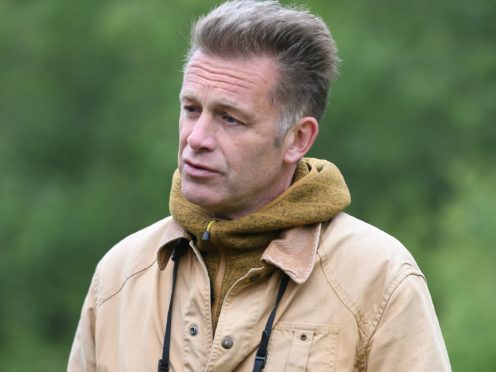It is not enough to get “upset about the rainforest coming down” while “persecuting” everything from “cockroaches to wasps” on our own doorstep, Chris Packham has said.
The Autumnwatch host, 59, is fronting a BBC Two nature documentary, filmed at a waterhole in Tanzania.
It was built to draw animals away from human water sources and reduce the competition for the precious resource.

Packham hopes his new documentary will help viewers think more about how to live alongside wild animals.
It is not enough to “gaze overseas and get very upset about the rainforest coming down,” he said.
“We’re a bit armchair conservation in the UK…
“We want there to be lots of lions and elephants because we love them. But we don’t have to live with them.
“And living with lions and elephants is a little bit harder than living with foxes and badgers and we’re not good at that,” the presenter and wildlife expert told the PA news agency.

Packham added: “We’ve got 13% of our forest cover left. Places like France have 39% of their forest cover left.
“We’ve got the most deforested set of countries in Western Europe.
“So, it’s a bit cheeky when we’ve cut all of our own trees down to suddenly start looking overseas and say, ‘Hey, don’t cut your trees down’…
“From that perspective, we’ve got to try and empathise.”
He added: “Everyone wants tigers, but do you want one in your back garden? Be honest! Not really, because it’s going to eat you, your children and your grandchildren…
“Look at the way we persecute animals in the UK – everything from cockroaches to wasps to pigeons and foxes and all these other things that we call pests and promptly get rid of.
“And you’ve got to think that… in some parts of the world, elephants are pests, tigers are pests.”
Warthogs, giraffes, monkeys and big cats meet and compete for water at the waterhole in Tanzania, in the programme presented by Packham and biologist Ella Al-Shamahi.
Half-submerged cameras were installed in the waterhole, built by the BBC Studios Natural History Unit and Mwiba Wildlife Reserve, to help illuminate how they support so much wildlife.
Packham wants his new documentary to make viewers think about the problems faced by people “living alongside” these “brilliant animals”.
“It’s actually a bit tricky, you can’t argue with an elephant!” he said.
But he called on people to build their own “waterhole”.
“You won’t be attracting elephants and buffalo… But you can see how that will transform your small space.
“By putting a washing-up bowl in your garden, you’re offering an enormously increased benefit.”
Packham said of his own approach to wildlife: “I don’t kill anything. If a mosquito comes to bite me, I brush it off.”
Waterhole: Africa’s Animal Oasis airs on December 4 at 9pm on BBC Two.
